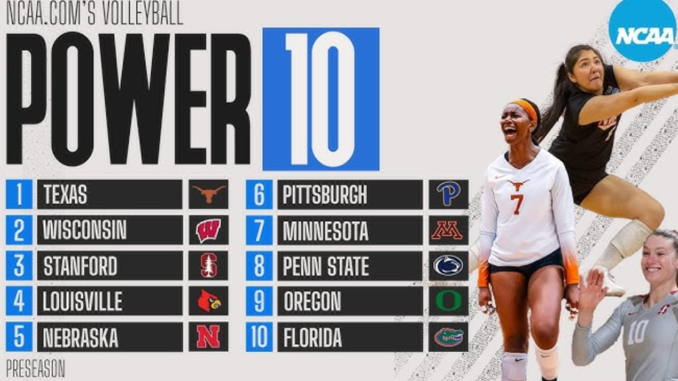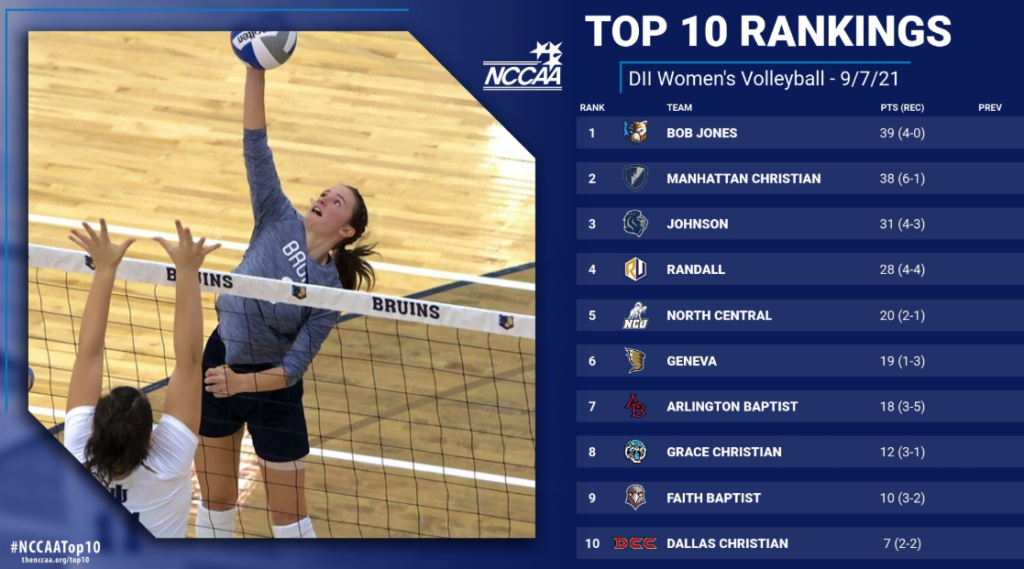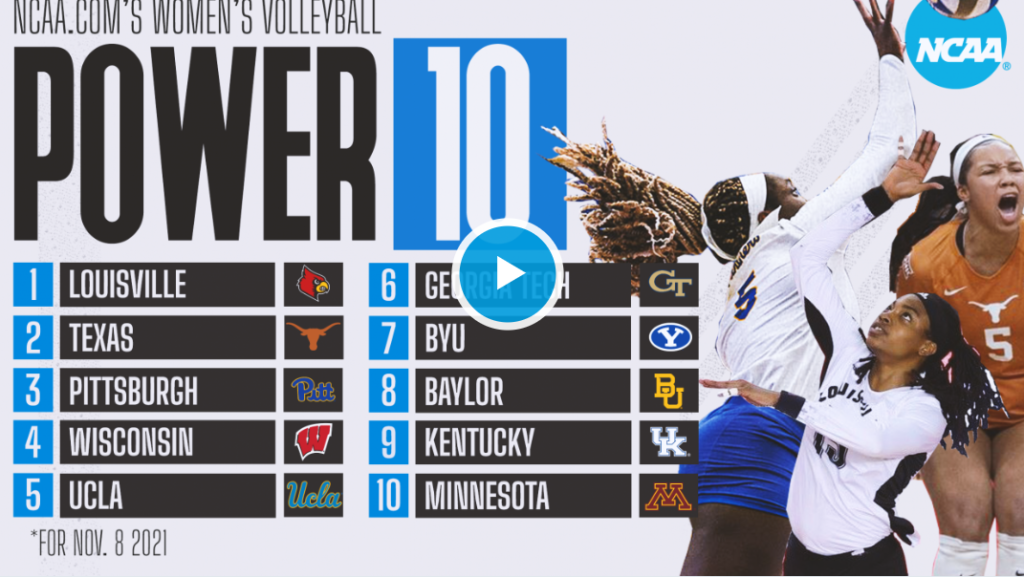
College Volleyball Rankings
College volleyball rankings are a cornerstone of the sport, serving as a barometer for team performance, a guide for fans, and a crucial factor in tournament seeding. Rankings showcase the best teams in NCAA Division I, II, and III volleyball, as well as NAIA and other collegiate divisions. They provide insight into the competitive landscape and are updated regularly to reflect current form, achievements, and challenges.
This comprehensive guide explores the history, methodology, and significance of college volleyball rankings. We’ll examine key organizations that determine rankings, their methodologies, notable trends, and the role rankings play in shaping the sport.
1. History of College Volleyball Rankings
1.1 Beginnings of Collegiate Volleyball
The collegiate volleyball landscape began to formalize in the mid-20th century, with the creation of the NCAA Women’s Volleyball Championship in 1981 and the men’s championship in 1970. Rankings were developed soon after to evaluate teams and provide a structured way of identifying top performers.
1.2 Evolution of Rankings
- Early Days: Rankings were initially based on basic win-loss records and subjective opinions from coaches.
- Introduction of Metrics: Over time, statistical analysis and strength-of-schedule metrics became integral to the process.
- Modern Era: Today’s rankings are highly sophisticated, using advanced algorithms and human insight to produce accurate evaluations.
2. Key Organizations Behind Rankings
Several organizations are responsible for creating and maintaining college volleyball rankings.
2.1 AVCA (American Volleyball Coaches Association)
The AVCA is the most recognized organization for collegiate volleyball rankings. It provides weekly polls for NCAA Division I, II, and III as well as NAIA, junior colleges, and high schools.
Division I Rankings
The AVCA Division I Coaches Poll is released weekly during the season and is widely regarded as the gold standard. It considers factors such as:
- Team record
- Strength of schedule
- Head-to-head matchups
- Input from expert coaches
2.2 RPI (Rating Percentage Index)
The NCAA uses the RPI to supplement the AVCA rankings. RPI is a mathematical formula that considers:
- Winning Percentage (WP): Performance in matches won.
- Opponent’s Winning Percentage (OWP): How well the team’s opponents have performed.
- Opponent’s Opponents’ Winning Percentage (OOWP): The strength of a team’s schedule based on its opponents’ schedules.
2.3 Other Notable Systems
- Volleytalk Polls: A community-driven system featuring analysis from volleyball enthusiasts.
- NCAA Selection Committees: Rankings provided for tournament seeding purposes.
- Media Rankings: Journalists and analysts also produce rankings based on season performance and expert opinions.

3. Methodology of College Volleyball Rankings
3.1 Factors Influencing Rankings
Rankings are determined by a combination of subjective and objective criteria:
- Win-Loss Record: A basic indicator of performance.
- Strength of Schedule: Evaluates the quality of opponents a team has faced.
- Set Differentials: Measures dominance by analyzing how convincingly teams win matches.
- Recent Performance: Weighs current form more heavily than early-season results.
- Injuries and Roster Changes: Consideration for context, such as injuries to key players.
3.2 Polling and Voting
For polls like the AVCA, a panel of coaches or experts votes on the rankings each week. Their evaluations are informed by match results, statistics, and insights into team dynamics.
3.3 Metrics vs. Human Insight
While mathematical models like RPI provide consistency and objectivity, human insight ensures context and nuances are captured, such as the impact of crowd support or mid-season improvements.
See Also; fc elite volleyball
4. NCAA Division I Volleyball Rankings
4.1 Overview
Division I volleyball features the highest level of competition in collegiate volleyball. Rankings often highlight perennial powerhouses like:
- Stanford University
- University of Texas
- University of Wisconsin
- Nebraska
4.2 Impact of Rankings on NCAA Tournament
The rankings play a critical role in seeding for the NCAA Tournament. A higher seed often grants teams:
- Easier Matchups: Favorable paths to the later stages of the tournament.
- Home Court Advantage: Hosting privileges in early rounds.
5. Rankings in Division II and III Volleyball
5.1 Division II Rankings
While Division II programs receive less national attention, the level of play is highly competitive. Rankings are determined using similar criteria as Division I, with schools like Concordia-St. Paul and Tampa dominating the field.
5.2 Division III Rankings
Division III emphasizes the balance between academics and athletics. Rankings highlight programs excelling in this balance, such as Calvin University and Juniata College.
6. Trends and Insights in College Volleyball Rankings
6.1 Rise of Mid-Major Teams
While traditional powerhouses dominate rankings, mid-major programs like BYU and Creighton have gained recognition through consistent performances and upset victories.
6.2 The Role of International Players
The increasing presence of international players has elevated the level of competition, influencing rankings as teams integrate diverse playing styles and strategies.
6.3 Impact of Technology
Data analytics and video analysis tools have allowed teams to fine-tune their strategies, leading to more competitive matches and influencing rankings by narrowing the gap between top-tier and emerging programs.
See Also; fc elite volleyball
7. Challenges and Criticism of Rankings
7.1 Subjectivity
Despite advances in metrics, rankings often involve subjective judgment, leading to debates over the fairness of certain placements.
7.2 Regional Bias
Teams from regions with more exposure and larger fan bases may receive more favorable rankings compared to equally talented teams from smaller conferences.
7.3 Strength of Schedule Dilemmas
Teams in weaker conferences may struggle to climb the rankings despite strong records due to perceived lower competition quality.

8. Role of Rankings for Players and Fans
8.1 For Players
Rankings are a source of motivation and recognition, offering players a benchmark to strive toward. High rankings can also boost recruitment prospects and opportunities for professional play.
8.2 For Fans
Rankings fuel rivalries and generate excitement, providing fans with a clear picture of which teams are contenders for championships.
See Also; Wichita State Volleyball
9. Rankings Beyond NCAA
9.1 NAIA Rankings
The National Association of Intercollegiate Athletics (NAIA) also maintains volleyball rankings, focusing on smaller schools with highly competitive programs.
9.2 Junior Colleges
NJCAA rankings spotlight emerging talent at the junior college level, serving as a stepping stone for athletes aiming for NCAA programs.
10. The Future of College Volleyball Rankings
10.1 Integration of Advanced Analytics
Expect rankings to become even more data-driven, incorporating metrics like player efficiency ratings and advanced scouting analytics.
10.2 Expanding Coverage
As college volleyball grows in popularity, rankings will likely receive broader media attention, further elevating the sport’s profile.
10.3 Emphasis on Inclusivity
Efforts to highlight programs from smaller conferences and emerging regions may lead to a more inclusive ranking system.
Conclusion
College volleyball rankings are more than just a list; they are a reflection of the sport’s competitive spirit and evolving dynamics. From the meticulous methodology behind their creation to their impact on players, fans, and tournaments, rankings are an integral part of collegiate volleyball’s ecosystem.
Leave a Reply